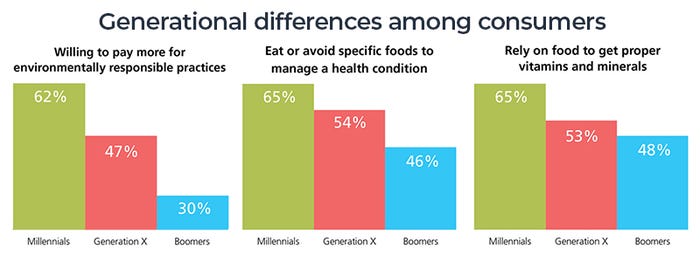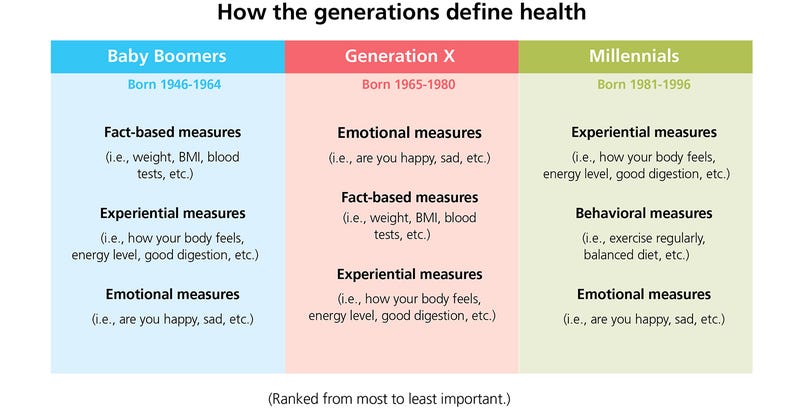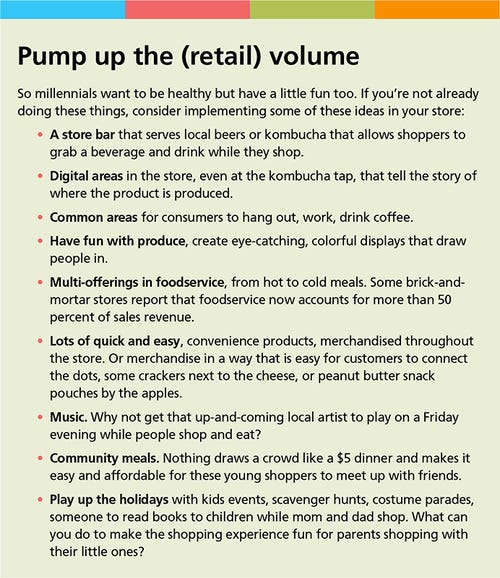June 19, 2019

Already have an account?
If you want a topic that could entertain a dinner party for hours, strike up a conversation about the changing consumer.
By the time you consider changing attitudes about what it means to be healthy; views on the environment; the social and moral obligations expected of brands; and how technology and social media have not only influenced behaviors, but the way we shop—you’ll find there’s a lot to talk about.
What’s driving this conversation? In the coming years, the sheer number of millennials combined with Generation Z overlapping in the workforce is expected to drive consumption but in a very different way than consumers have in years past. These two groups simply think differently about their purchases than those who have gone before them.

The new consumption model
Basically, the new consumer is disrupting marketing and the way we’ve known consumers to purchase says Eric Pierce, vice president of business insights for New Hope Network. The formula CPG brands always relied on to reach consumers no longer works.
As the market dynamics change, what’s important now, says Pierce, is “to know that the customer is the retailer, where products are sold. The consumer is the end user who brings their values, beliefs and behaviors to the purchase and the channel is the media we use to communicate with consumers.”
The changes in the marketplace are just now becoming increasingly evident as millennials account for more of the workforce and are coming into their peak earning—and spending—years. Millennials, those born between 1981 and 1996 according to Pew Research, account for approximately 73 million residents and now almost two-fifths of the working-age population. As of 2019, they are just outnumbering baby boomers (the mega-generation born after World War II to 1964), who are about 72 million strong. Behind millennials, comes Generation Z, or those born in or after 1997. Estimates have sized this group at roughly 26 percent of the population, or larger than the other groups. In terms of spending, experts say Gen Z already represents a $600 billion market and that number is expected to reach $3 trillion in another two years.
Yet as these consumers begin to drive sales, according to consumer research conducted by New Hope Network, they are changing the shopping paradigm: Consumption is no longer the passive acquisition of stuff. Increasingly, consumers, driven by millennials, see making a purchase as an act that impacts someone else and therefore requires ethical decision making. When it comes to their food, 73 percent of millennial respondents told researchers they value how food is made and who grew it. Likewise, the majority were inclined to pay more for environmentally responsible practices. While 47 percent of Generation X respondents also were inclined to do so, the number of baby boomers who agreed to this was negligible.
“Today’s and tomorrow’s consumer wants to engage with brands on a deeper level. There will probably always be room for shallow or superficial brands that offer convenience and low cost. But it appears that tomorrow’s strongest brands may be ones of depth and character that take the time to tell the story of how the food was grown and made,” Pierce says.
A deeper connection
For retailers, focusing on brands with an authentic story can be a differentiator, says longtime industry strategist John Grubb, managing partner at Summit Venture Management.
“Millennials have had a huge influence on Generation Z, and Z is at least as motivated by purpose-driven companies as millennials,” he says.
While Gen Z doesn’t yet have the market purchasing power, Grubb explains, they are increasingly influential and will one day soon have that power.
“They look at brands like, ‘OK you have a great product, well priced, good tasting, tell me something more.’ My advice to entrepreneurs in an environment where there are so many well-funded disruptive companies is you better lean heavily into your purpose.
“Don’t just serve up a good product, because consumers are looking for something more than a good product,” he says. “Retailers take notice of the brands that are being successful and connecting in an authentic way with people. Feature purposeful brands.”
While online has become an outlet for shopping and certain categories that lend themselves to online purchase, these shoppers still seek the “experience” that can come through the assortment of product and community vibe offered at brick-and-mortar stores, says Grubb. The experience consumers seek includes “a hyperlocal product assortment. It’s craft and artisanal, digital engagement, and being part of the community, education and entertainment,” he says. “Community engagement involved in a physical shopping trip—when the experience is education and community oriented with purpose-driven ingredients, it becomes a desirable envelope.”

Food=health
In thinking about where their food is coming from and the environment, millennials are also thinking about their own health and are consistently looking for ways to be healthier.
“There is a realization that we have a massive public health crisis and younger cohorts don’t want to look like the elders they see around them,” Grubb says.
Yet how millennials define health is also different from Gen X and boomers who are more focused on fact-based measures. According to New Hope Network research, when evaluating their overall health, millennials place more emphasis on experiential and behavioral measures.
“When we ask consumers to tell us what is most important in evaluating their own health, millennials are more likely to focus on experiential and behavioral measures, like how they feel, their energy levels, if they exercise regularly or eat a balanced diet,” Pierce says. Boomers and Gen Xers rely on fact-based measures such as their weight and blood tests, he adds.
As the younger generations seek a more holistic sense of wellness, it is influencing what they value in their food choices. Increasingly, millennials are looking to food as a means for managing health conditions and to meet their nutritional needs, which can be evidenced in the number of specialty diets supported in the marketplace such as gluten free, allergen free, plant based and even ketogenic and paleo diets. The desire for overall wellness also influences their perspective on what is necessary for balanced nutrition, as millennials value the role supplements play in supporting a healthy lifestyle and the role they can play in managing health as well.
Still, Pierce notes that these younger consumers also realize that living a healthy lifestyle can be frustrating. It can’t be all work with no fun—they’re still young after all. Hence why mixing a little fun into a brand story or offering entertainment at a store can be engaging. Despite all of their efforts to be mindful, these young consumers, he says, are also trying to focus on enjoying today—even if it means a less than perfectly healthy lifestyle.
Pump up the (retail) volume
Millennials want to be healthy but have a little fun too. If you’re not already, consider implementing some of these ideas in your store, or ask your customers what they’d like to see.

For a PDF of these ideas, click on the image or on the link below.
About the Author
You May Also Like
.png?width=700&auto=webp&quality=80&disable=upscale)





